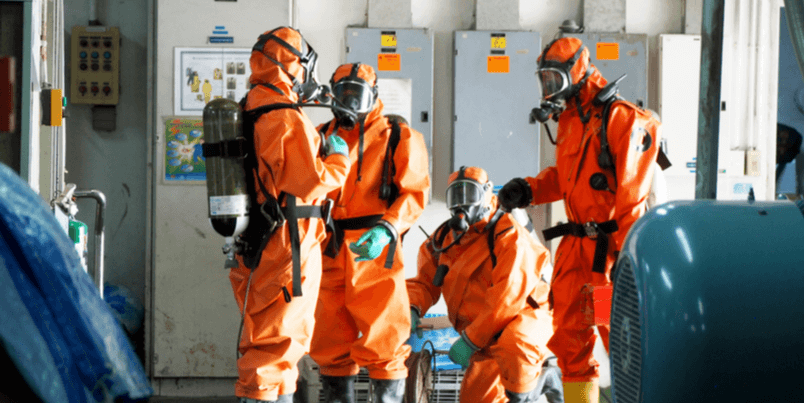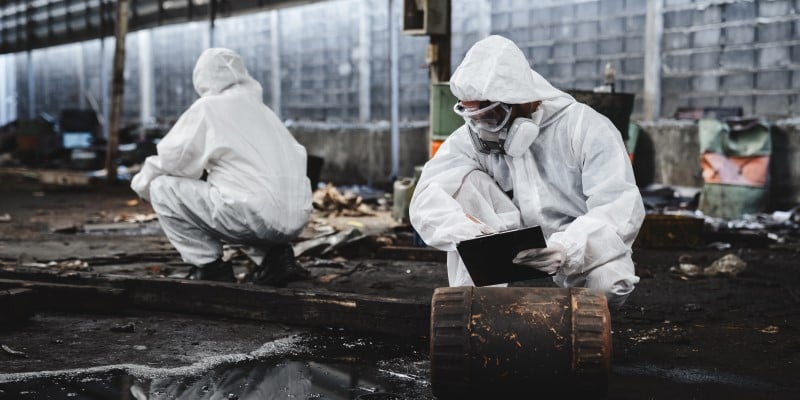 Major incidents involving ionising radiation are thankfully rare, but this can mean that many firefighters or first responders may have little or no first-hand experience of handling the challenges of a real-life radiological emergency.
Major incidents involving ionising radiation are thankfully rare, but this can mean that many firefighters or first responders may have little or no first-hand experience of handling the challenges of a real-life radiological emergency.
While the prospect of attending the aftermath of a deliberate radiological act such as the detonation of a “dirty bomb” is highly unlikely day-to-day, there are other less obvious examples of radiological hazards that may be overlooked in the course of attending what appears to be a routine event.
Assessing the radiological risk
Wherever radiation sources are used, handled or moved from place to place there is always the risk of misadventure - and with it the increased chance of exposure of those who are first on the scene.
There is the controlled use of ionising radiation within fixed structures, such as in hospitals or nuclear medicine departments for example, where gamma rays are used for the purposes of medical screening, diagnostics, cancer treatment or x-rays.
There is the use of industrial radiography within the engineering or construction sectors to aid in quality assurance and the identification of defects.
And there is the transportation of radioactive materials, from the shipping of low level sources such as those found in smoke detectors to the movement of high level radioactive waste located in spent fuel rods from nuclear reactors.
Given the prevalence of radiation sources that exist within public and industrial environments it is really only a matter of time before responders find themselves facing an incident that involves some form of radiological hazard.
Monitoring gamma radiation exposure
When measuring gamma radiation there are two properties that need to be classified: the activity (or strength) of the source and the dose (or amount) of ionising radiation that is being absorbed by the body.
If the presence of ionising radiation is known or suspected to be present, a portable personal dose rate meter will provide a quick, accurate and reliable means of measuring the dose rate.
Personal dose meters provide the means for first responder personnel to continuously monitor their radiation exposure in any radiological or nuclear emergency and to obtain quick and reliable gamma dose rate measurements.
While these devices have been designed for ease of use, there is still the vital need to ensure that personnel are competent and confident in handling their equipment and interpreting the readings that they receive.
Surprisingly though, very little is known about first responders’ knowledge of radiation exposure, or of the extent of radiological training provided to them.
One study, conducted over an eight-month period from July 2018 to February 2019, surveyed 433 first responders in order to establish both the depth of their radiological understanding and the training that they had received.
Just under a quarter of the respondents (23.6%) stated that they had not received any form of radiological event training - while only 14% of those surveyed reported that they had taken part in hands-on radiological training exercises.
When we consider the challenges that are associated with creating realistic radiation training opportunities, it is perhaps not surprising that some instructors have shied away from attempting to recreate the practical aspects of radiological exercises.
Regulatory and safety considerations make training with live sources out of reach for most organisations - but the use of simpler “make-believe” methods, such as the handing out of three by five cards or the relaying of verbal instructions, are inevitably going to be poor substitutes for the “real thing.”
It is here that the integration of simulators can play a powerful role, by providing trainees with the opportunity to handle simulator detectors that replicate the look, feel and response of the real device and that respond to completely safe electromagnetic sources that can be used in any location.
High impact radiation training simulators
Argon Electronics’ long-standing relationship with Thermo Fisher has enabled the development of a simulator for the RadEye GF-10 personal dose rate meter.
The RadEye GF-10 SIM is a powerful training tool that features the identical interface as the real device, including all of the user components such as display, indicators, sounder, vibrator and switch panel.
The simulator offers life-like response speed to ensure it behaves identically as the actual detector does when approaching or moving away from the radiation source.
Simulated sensitivity means the RadEye GF-10-SIM can detect the RadSim GS4 simulation gamma source at a free space distance of approximately 200 feet (60 metres) line of sight.
The simulator’s powerful signal processing ensures that simulated readings are repeatable each time the student revisits the same scenario location.
The effect of user body shielding is also realistically simulated so survey teams can understand how to effectively interpret their detector’s readings and alarms.
Radiation monitoring instrumentation has a key role to play wherever there is a risk of ionising radiation exposure, whether in the context of routine operations or in response to a radiological incident.
With the help of simulator training devices such as the RadEYE GF-10 SIM, instructors now have the ability to add an even deeper level of authenticity that will educate, inform and empower their trainees in facing the challenges of radiological incidents.
While incidents of ionising radiation are rare, this doesn't mean firefighters or first responders should skip training for a radiological emergency. Assessing risk and monitoring exposure are two key elements in which all first responders should be competent. Simulators can have a positive impact on learning and efficiency, but encorporating these into training for the first time can be daunting. With this in mind, Argon has published an introductory guide about gamma radiation training using simulators. Download this guide for free and learn how simulators can boost radiation response training to a new level.







